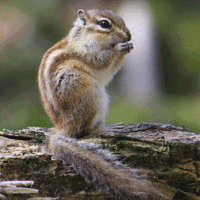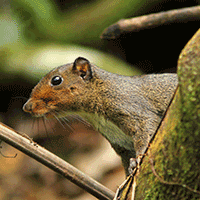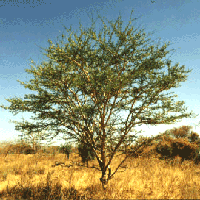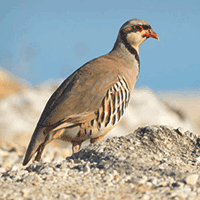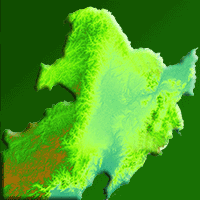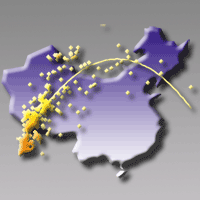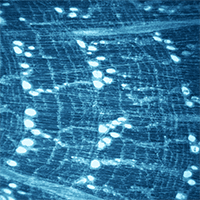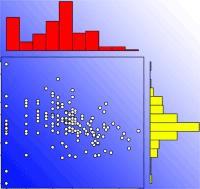The ecological influence of functional traits on species persistence as well as on their role over the organization of forest communities in the Brazilian Cerrado biome have not been fully understood yet. In this study, we assessed the effects of six functional groups, characterized by three seed dispersal syndromes (i.e., anemochory, autochory, and zoochory) and three wood density classes (i.e., hardwood, lightwood, and softwood), on tree spatial distribution patterns, habitat occupancy, and ecosystem services (biomass hyper dominance and abundance) provided by a forest community located in the “Parque do Lajeado”, state of Tocantins, Brazil. The similarity among study sites was characterized by applying the tree dominant height approach and the environmental and soil variables as input. The floristic similarity was assessed by applying the Bray-Curtis index. The zoochoric species showed more aggregated spatial pattern at local scale, which indicates that it is more sensitive to environmental gradients than other dispersal syndromes. Meanwhile, hardwood density species were more established in the community, being more persistent to environmental filters. We observed that a small number of species contributed with about 50% of the abundance and biomass of the community, whose functional traits (wood density and dispersal syndrome) indirectly affect the relationship among the community species richness and their ecosystem functions. We observed that the functional traits related to seed dispersal and wood density functional groups resulted in different spatial distribution patterns of those tree species. Therefore, functional traits and environmental factors combined have substantially affected the structure and composition of forest communities at local scale.
Keywords
, , , ,
Citation
De Souza HJ, Miguel EP, Resende RT, Matricardi EAT, Rezende AV, Leal FA, Dos Santos ML (2022). Effects of functional traits on the spatial distribution and hyperdominance of tree species in the Cerrado biome. iForest 15: 339-348. - doi: 10.3832/ifor3920-015
Academic Editor
Michele Carbognani
Paper history
Received: Jul 05, 2021
Accepted: Jul 05, 2022
First online: Sep 01, 2022
Publication Date: Oct 31, 2022
Publication Time: 1.93 months
© SISEF - The Italian Society of Silviculture and Forest Ecology 2022
Open Access
This article is distributed under the terms of the Creative Commons Attribution-Non Commercial 4.0 International (https://creativecommons.org/licenses/by-nc/4.0/), which permits unrestricted use, distribution, and reproduction in any medium, provided you give appropriate credit to the original author(s) and the source, provide a link to the Creative Commons license, and indicate if changes were made.

Breakdown by View Type
(Waiting for server response...)
Article Usage
Total Article Views: 28957
(from publication date up to now)
Breakdown by View Type
HTML Page Views: 23436
Abstract Page Views: 2747
PDF Downloads: 2368
Citation/Reference Downloads: 1
XML Downloads: 405
Web Metrics
Days since publication: 1205
Overall contacts: 28957
Avg. contacts per week: 168.21
Article Citations
Article citations are based on data periodically collected from the Clarivate Web of Science web site
(last update: Mar 2025)
Total number of cites (since 2022): 2
Average cites per year: 0.50
Publication Metrics
by Dimensions ©
Articles citing this article
List of the papers citing this article based on CrossRef Cited-by.
(1)
Abe N, Miatto RC, Batalha MA (2018)Relationships among functional traits define primary strategies in woody species of the Brazilian “cerrado”. Revista Brasileira de Botanica 41: 351-360.
CrossRef |
Gscholar
(2)
Alvares CA, Stape JL, Sentelhas PC, De Moraes Gonçalves JL, Sparovek G (2013)Köppen’s climate classification map for Brazil. Meteorologische Zeitschrift 22: 711-728.
CrossRef |
Gscholar
(3)
Anderson JT, Panetta AM, Mitchell-Olds T (2012)Evolutionary and ecological responses to anthropogenic climate change. Plant Physiology 160: 1728-1740.
CrossRef |
Gscholar
(4)
Baddeley A, Turner R, Mateu J, Bevan A (2013)Hybrids of Gibbs point process models and their implementation. Journal of Statistical Software. 55.
CrossRef |
Gscholar
(5)
Baselga A, Orme CDL (2012)betapart: an R package for the study of beta diversity. Methods in Ecology and Evolution 3: 808-812.
CrossRef |
Gscholar
(6)
Borchert R (1994)Soil and stem water storage determine phenology and distribution of tropical dry forest trees. Ecology 75: 1437-1449.
CrossRef |
Gscholar
(7)
Camargo PHSA, Rodrigues SBM, Piratelli AJ, Oliveira PS, Christianini AV (2019)Interhabitat variation in diplochory: seed dispersal effectiveness by birds and ants differs between tropical forest and savanna. Perspectives in Plant Ecology, Evolution and Systematics 38: 48-57.
CrossRef |
Gscholar
(8)
Chave J, Coomes D, Jansen S, Lewis SL, Swenson NG, Zanne AE (2009)Towards a worldwide wood economics spectrum. Ecology Letters 12: 351-366.
CrossRef |
Gscholar
(9)
Côrtes MC, Uriarte M (2013)Integrating frugivory and animal movement: a review of the evidence and implications for scaling seed dispersal. Biological Reviews 88: 255-272.
CrossRef |
Gscholar
(10)
De Cássia-Silva C, Cianciaruso MV, Maracahipes L, Collevatti RG (2017)When the same is not the same: phenotypic variation reveals different plant ecological strategies within species occurring in distinct Neotropical savanna habitats. Plant Ecology 218: 1221-1231.
CrossRef |
Gscholar
(11)
De Missio FF, Higuchi P, Carolina Da Silva A, Longhi SJ, Salami B, Rosa AD, Buzzi-Junior F, De Souza Ferreira T, Marcon AK, Bento MA (2016)Trade-offs and spatial variation of functional traits of tree species in a subtropical forest in southern Brazil. iForest 9: 855-859.
CrossRef |
Gscholar
(12)
Dos Santos HG, Jacomine PKT, Dos Anjos LH, De Oliveira VA, Lumbreras JF, Coelho MR, De Almeida JA, Cunha TJF, De Oliveira JB (2013)Sistema brasileiro de classificação de solos (3rd edn) [Brazilian soil classification system]. EMBRAPA, Brasília, DF, Brazil, pp. 353. [in Portuguese]
Gscholar
(13)
Dos Santos RD, Dos Santos HG, Ker JC, Dos Anjos LH, Shimizu SH (2015)Manual de descrição e coleta de solo no campo [Field soil description and collection manual]. Sociedade Brasileira de Ciência do Solo, Viçosa, Brazil, pp. 102. [in Portuguese]
Gscholar
(14)
Engert JE, Vogado NO, Freebody K, Byrne B, Murphy J, Sheather G, Snodgrass P, Nugent L, Lloyd D, Laurance SGW (2020)Functional trait representation differs between restoration plantings and mature tropical rainforest. Forest Ecology and Management 473: 118304.
CrossRef |
Gscholar
(15)
Escobar DFE, Silveira FAO, Morellato LPC (2018)Timing of seed dispersal and seed dormancy in Brazilian savanna: two solutions to face seasonality. Annals of Botany 121: 1197-1209.
CrossRef |
Gscholar
(16)
Fauset S, Johnson MO, Gloor M, Baker TR, Monteagudo MA, Brienen RJW, Feldpausch TR, Lopez-Gonzalez G, Malhi Y, Ter Steege H, Pitman NCA, Baraloto C, Engel J, Pétronelli P, Andrade A, Camargo JLC, Laurance SGW, Laurance WF, Chave J, Allie E, Vargas PN, Terborgh JW, Ruokolainen K, Silveira M, Aymard CGA, Arroyo L, Bonal D, Ramirez-Angulo H, Araujo-Murakami A, Neill D, Hérault B, Dourdain A, Torres-Lezama A, Marimon BS, Salomão RP, Comiskey JA, Réjou-Méchain M, Toledo M, Licona JC, Alarcón A, Prieto A, Rudas A, Van Der Meer PJ, Killeen TJ, Marimon Junior BH, Poorter L, Boot RGA, Stergios B, Torre EV, Costa FRC, Levis C, Schietti J, Souza P, Groot N, Arets E, Moscoso VC, Castro W, Coronado ENH, Peña-Claros M, Stahl C, Barroso J, Talbot J, Vieira ICG, Van Der Heijden G, Thomas R, Vos VA, Almeida EC, Davila EA, Aragão LEOC, Erwin TL, Morandi PS, De Oliveira EA, Valadão MBX, Zagt RJ, Van Der Hout P, Loayza PA, Pipoly JJ, Wang O, Alexiades M, Cerón CE, Huamantupa-Chuquimaco I, Di Fiore A, Peacock J, Camacho NCP, Umetsu RK, De Camargo PB, Burnham RJ, Herrera R, Quesada CA, Stropp J, Vieira SA, Steininger M, Rodríguez CR, Restrepo Z, Muelbert AE, Lewis SL, Pickavance GC, Phillips OL (2015)Hyperdominance in Amazonian forest carbon cycling. Nature Communications 6: 1-9.
CrossRef |
Gscholar
(17)
Flora Do Brazil (2019)REFLORA - Brazilian plants: historic rescue and virtual herbarium for knowledge and conservation of the Brazilian flora. Institute of Research - Botanical Garden, Rio de Janeiro, Brazil, web site.
Online |
Gscholar
(18)
Graco-Roza C, Aarnio S, Abrego N, Acosta ATR, Alahuhta J, Altman J, Angiolini C, Aroviita J, Attorre F, Baastrup-Spohr L, Barrera-Alba JJ, Belmaker J, Biurrun I, Bonari G, Bruelheide H, Burrascano S, Carboni M, Cardoso P, Carvalho JC, Castaldelli G, Christensen M, Correa G, Dembicz I, Dengler J, Dolezal J, Domingos P, Erös T, Ferreira CEL, Filibeck G, Floeter SR, Friedlander A, Gammal J, Gavioli A, Gossner MM, Granot I, Guarino R, Gustafsson C, Hayden B, He S, Heilmann-Clausen J, Heino J, Hunter JT, Huszar De VL M, Janišová M, Jyrkänkallio-Mikkola J, Kahilainen K, Kemppinen J, Kozub A, Kruk C, Kulbiki M, Kuzemko A, Roux Cle P, Lehikoinen A, Lima De DT, Lopes-Urrutia A, Lukács BA, Luoto M, Mammola S, Marinho MM, Menezes Da L S, Milardi M, Miranda M, Moser GAO, Mueller J, Niittynen P, Norkko A, Nowak A, Ometto J, Ovaskainen O, Overbeck GE, Pacheco FS, Pajunen V, Palpurina S, Picazo F, Prieto JAC, Rodil IF, Sabatini FM, Salingré S, Sanctis De M, Segura AM, Da Silva LHS, Stevanovic ZD, Swacha G, Teittinen A, Tolonen KT, Tsiripidis I, Virta L, Wang B, Wang J, Weisser W, Xu Y, Soininen J (2022)Distance decay 2.0 - A global synthesis of taxonomic and functional turnover in ecological communities. Global Ecology and Biogeography 31 (7): 1399-1421.
CrossRef |
Gscholar
(19)
Guo Y, Chen HYH, Wang B, Xiang W, Li D, Li X, Mallik AU, Ding T, Huang F, Lu S, Wen S (2021)Conspecific and heterospecific crowding facilitate tree survival in a tropical karst seasonal rainforest. Forest Ecology and Management. 481: 118751.
CrossRef |
Gscholar
(20)
Guo Y, Wang B, Mallik AU, Huang F, Xiang W, Ding T, Wen S, Lu S, Li D, He Y, Li X (2017)Topographic species-habitat associations of tree species in a heterogeneous tropical karst seasonal rain forest, China. Journal of Plant Ecology 10: 450-460.
CrossRef |
Gscholar
(21)
Han X, Huang J, Zang R (2021)Shifts in ecological strategy spectra of typical forest vegetation types across four climatic zones. Scientific Reports 11: 1-9.
CrossRef |
Gscholar
(22)
Hawes JE, Vieira ICG, Magnago LFS, Berenguer E, Ferreira J, Aragão LEOC, Cardoso A, Lees AC, Lennox GD, Tobias JA, Waldron A, Barlow J (2020)A large-scale assessment of plant dispersal mode and seed traits across human-modified Amazonian forests. Journal of Ecology. 108: 1373-1385.
CrossRef |
Gscholar
(23)
Howe HF (2016)Making dispersal syndromes and networks useful in tropical conservation and restoration. Global Ecology and Conservation 6: 152-178.
CrossRef |
Gscholar
(24)
Janzen DH (1970)Herbivores and the number of tree species in tropical forests. The American Naturalist 104: 501-528.
CrossRef |
Gscholar
(25)
Jara-Guerrero A, De la Cruz M, Espinosa CI, Méndez M, Escudero A (2015)Does spatial heterogeneity blur the signature of dispersal syndromes on spatial patterns of woody species? A test in a tropical dry forest. Oikos 124: 1360-1366.
CrossRef |
Gscholar
(26)
King DA (1990)Allometry of saplings and understorey trees of a Panamanian forest. Functional Ecology 4: 27.
CrossRef |
Gscholar
(27)
Kuhlmann M, Ribeiro JF (2016)Fruits and frugivores of the Brazilian Cerrado: ecological and phylogenetic considerations. Acta Botanica Brasilica 30: 495-507.
CrossRef |
Gscholar
(28)
Kupers SJ, Engelbrecht BMJ, Hernández A, Wright SJ, Wirth C, Rüger N (2019)Growth responses to soil water potential indirectly shape local species distributions of tropical forest seedlings. Journal of Ecology 107: 860-874.
CrossRef |
Gscholar
(29)
Lamanna C, Blonder B, Violle C, Kraft NJB, Sandel B, Donoghue JC, Svenning JC, McGill BJ, Boyle B, Buzzard V, Dolins S, Jrgensen PM, Marcuse-Kubitza A, Morueta-Holme N, Peet RK, Piel WH, Regetz J, Schildhauer M, Spencer N, Thiers B, Wiser SK, Enquist BJ (2014)Functional trait space and the latitudinal diversity gradient. Proceedings of the National Academy of Sciences USA 111: 13745-13750.
CrossRef |
Gscholar
(30)
Maestre FT, Quero JL, Gotelli NJ, Escudero A, Ochoa V, Delgado-Baquerizo M, García-Gómez M, Bowker MA, Soliveres S, Escolar C, García-Palacios P, Berdugo M, Valencia E, Gozalo B, Gallardo A, Aguilera L, Arredondo T, Blones J, Boeken B, Bran D, Conceição AA, Cabrera O, Chaieb M, Derak M, Eldridge DJ, Espinosa CI, Florentino A, Gaitán J, Gabriel Gatica M, Ghiloufi W, Gómez-González S, Gutiérrez JR, Hernández RM, Huang X, Huber-Sannwald E, Jankju M, Miriti M, Monerris J, Mau RL, Morici E, Naseri K, Ospina A, Polo V, Prina A, Pucheta E, Ramírez-Collantes DA, Romão R, Tighe M, Torres-Díaz C, Val J, Veiga JP, Wang D, Zaady E (2012)Plant species richness and ecosystem multifunctionality in global drylands. Science 335: 214-218.
CrossRef |
Gscholar
(31)
Martins VF, Cazotto LPD, Santos Dos FAM (2014)Dispersal spectrum of four forest types along an altitudinal range of the Brazilian Atlantic Rainforest. Biota Neotropica 14: 4-9.
CrossRef |
Gscholar
(32)
Miguel EP, Rezende AV, Leal FA, Matricardi EAT, Do Vale AT, Pereira RS (2015)Redes neurais artificiais para a modelagem do volume de madeira e biomassa do cerradão com dados de satélite [Artificial neural networks for modeling wood volume and biomass in Cerrado with satellite data]. Pesquisa Agropecuaria Brasileira 50: 829-839. [in Portuguese]
CrossRef |
Gscholar
(33)
Momo ST, Ploton P, Martin-Ducup O, Lehnebach R, Fortunel C, Sagang LBT, Boyemba F, Couteron P, Fayolle A, Libalah M, Loumeto J, Medjibe V, Ngomanda A, Obiang D, Pélissier R, Rossi V, Yongo O, Bocko Y, Fonton N, Kamdem N, Katembo J, Kondaoule HJ, Maïdou HM, Mankou G, Mbasi M, Mengui T, Mofack GII, Moundounga C, Moundounga Q, Nguimbous L, Ncham NN, Asue FOM, Senguela YP, Viard L, Zapfack L, Sonké B, Barbier N (2020)Leveraging signatures of plant functional strategies in wood density profiles of african trees to correct mass estimations from terrestrial laser data. Scientific Reports 10: 1-11.
CrossRef |
Gscholar
(34)
Mueller-Dombois D, Ellenberg H (2002)Aims and methods of vegetation ecology (2nd edn). The Blackburn Press, Caldwell, NJ, USA, pp. 547.
Gscholar
(35)
Oksanen J, Guillaume F B, Legendre P, Minchin PR, O’Hara RB, Simpson GL, Solymos P, Henry MS (2015)vegan: community ecology package. R Package Version 2:3-4, web site.
Online |
Gscholar
(36)
Poorter L, Van Der Sande MT, Arets EJMM, Ascarrunz N, Enquist B, Finegan B, Licona JC, Martínez-Ramos M, Mazzei L, Meave JA, Muñoz R, Nytch CJ, De Oliveira AA, Pérez-García EA, Prado-Junior J, Rodríguez-Velázques J, Ruschel AR, Salgado-Negret B, Schiavini I, Swenson NG, Tenorio EA, Thompson J, Toledo M, Uriarte M, Hout Van P D, Zimmerman JK, Peña-Claros M (2017)Biodiversity and climate determine the functioning of Neotropical forests. Global Ecology and Biogeography 26: 1423-1434.
CrossRef |
Gscholar
(37)
Resende RT, Soares AAV, Forrester DI, Marcatti GE, Dos Santos AR, Takahashi EK, Silva FF, Grattapaglia D, Resende MDV, Leite HG (2018)Environmental uniformity, site quality and tree competition interact to determine stand productivity of clonal Eucalyptus. Forest Ecology and Management 410: 76-83.
CrossRef |
Gscholar
(38)
Ribeiro JF, Walter BMT (2008)As fitofisionomias do Bioma Cerrado [The main vegetation types of the Cerrado Biome]. In: “Cerrado: Ecologia e Flora” (1st edn) (S Sano, S Almeida, JF Ribeiro eds). EMBRAPA, Brasília, DF, Brazil, vol. 1, pp. 150-212. [in Portuguese]
Gscholar
(39)
Rodrigues AC, Villa PM, Neri AV (2019)Fine-scale topography shape richness, community composition, stem and biomass hyperdominant species in Brazilian Atlantic forest. Ecological Indicators 102: 208-217.
CrossRef |
Gscholar
(40)
Schupp EW, Jordano P, Gómez JM (2010)Seed dispersal effectiveness revisited: a conceptual review. New Phytologist 188: 333-353.
CrossRef |
Gscholar
(41)
Seidler TG, Plotkin JB (2006)Seed dispersal and spatial pattern in tropical trees. PLoS Biology 4: 2132-2137.
CrossRef |
Gscholar
(42)
Solórzano A, Pinto JRR, Felfili JM, Hay JDV (2012)Structural and floristic profile of the woody component of six cerradão areas. Acta Botanica Brasilica 26: 328-341.
CrossRef |
Gscholar
(43)
Staggemeier VG, Cazetta E, Morellato LPC (2017)Hyperdominance in fruit production in the Brazilian Atlantic rain forest: the functional role of plants in sustaining frugivores. Biotropica 49: 71-82.
CrossRef |
Gscholar
(44)
Tackenberg O (2003)Modeling long-distance dispersal of plant diaspores by wind. Ecological Monographs 73: 173-189.
CrossRef |
Gscholar
(45)
Terra DCNSM, Dos Santos RM, Do Prado Júnior JA, De Mello JM, Scolforo JRS, Fontes MAL, Schiavini I, Dos Reis AA, Bueno IT, Magnago LFS, Ter Steege H (2018)Water availability drives gradients of tree diversity, structure and functional traits in the Atlantic-Cerrado-Caatinga transition, Brazil. Journal of Plant Ecology 11: 803-814.
CrossRef |
Gscholar
(46)
Thomson FJ, Moles AT, Auld TD, Kingsford RT (2011)Seed dispersal distance is more strongly correlated with plant height than with seed mass. Journal of Ecology 99: 1299-1307.
CrossRef |
Gscholar
(47)
Vega E, Martínez-Ramos M, García-Oliva F, Oyama K (2020)Influence of environmental heterogeneity and geographic distance on beta-diversity of woody communities. Plant Ecology 221: 595-614.
CrossRef |
Gscholar


